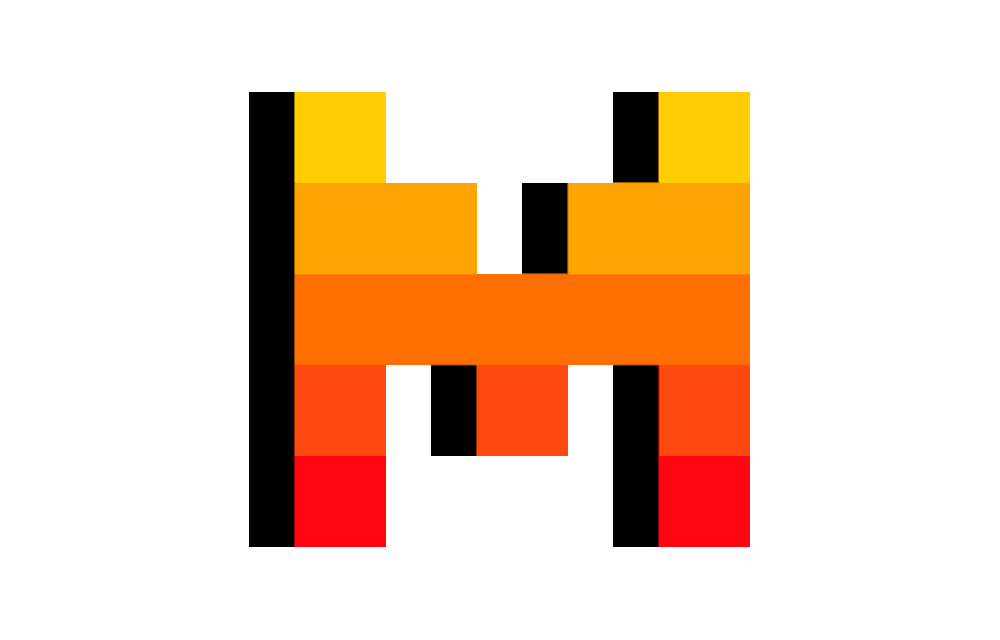In this article, we discuss the three main customer success strategies - low-touch, mid-touch, and high-touch - and show you how each one can make a big difference.
With countless customer success strategies floating around online, it's easy to feel overwhelmed and unsure of which one to choose. But the truth is that not all strategies fit every customer. So, how do you pinpoint the right approach for your unique needs? That’s exactly what this article will uncover.
In this article, we discuss the three main customer success strategies - low-touch, mid-touch, and high-touch - and show you how each one can make a big difference. Plus, you’ll benefit from Nisha Baxi’s expert tips, shared during our engaging webinar, "Unlocking Success: Inside Stories of Customer Education Implementation.”
Outline
- Introduction
- Understanding Customer Success Strategies
- Low-Touch Customer Success
- Mid-Touch Customer Success
- High-Touch Customer Success
- Choosing the Right Strategy
- Low-Touch Customer Success
- Mid-Touch Customer Success
- High-Touch Customer Success
- Strategies for Integrating Digital Tools
- Automation and AI
- Data Analytics
- Case Study: Gong’s Approach to Multi-Touch Customer Success
- Challenges and Solutions
- Maintaining Consistency
- Scalability
- Resource Management
- Conclusion
Understanding Customer Success Strategies
Customer success strategies can be broadly categorized into three types: low-touch, mid-touch, and high-touch. Each strategy differs in the level of interaction and personalization provided to the customer.
1. Low-Touch Customer Success
Low-touch customer success is a strategy that relies on technology and automation to manage customer interactions. Unlike high-touch customer success, which involves personalized and hands-on support, low-touch focuses on using digital tools to handle customer needs more efficiently.
Key Elements of Low-Touch Customer Success:
- Automation: This means using tools like automated emails, chatbots, and self-service portals to assist customers. For instance, an automated email might remind customers of an upcoming renewal, or a chatbot could provide instant answers to common questions.
- Scalability: This approach is designed to manage a large number of customers without needing a proportional increase in resources. For example, a company might use automated onboarding systems to welcome thousands of new users each month, without hiring extra staff.
- Proactive Communication: Automated updates and check-ins keep customers informed and engaged, even if they don’t receive personal attention.
Example In Practice: Nisha Baxi explains this well: "Digital tools are crucial for handling a wide range of customer needs, especially when many interactions begin in a digital format due to their scale." At Gong, low-touch strategies mean harnessing the power of technology to provide consistent value to all customers, ensuring that even those with minimal needs receive effective and efficient support.
2. Mid-Touch Customer Success
Mid-touch customer success is a strategy that combines occasional personal interaction with automated digital tools. It’s designed for mid-sized accounts or customers who need a balanced level of support - more than what’s offered by a low-touch approach but less than the constant attention provided by a high-touch strategy.
Key Elements of Mid-Touch Customer Success:
- Segmentation: This involves sorting your customers into groups based on how much support they need. For mid-touch, you identify which segments need a mix of personal and automated support, ensuring that each group gets just the right amount of attention.
- Periodic Check-Ins: This means setting up regular times to connect with customers through calls or meetings. These check-ins allow customer success managers (CSMs) to stay updated on customer needs and address any issues at planned intervals, rather than being constantly available.
- Customized Resources: Personalizing resources and support to fit each customer’s needs. This might include creating custom guides, offering personalized advice, or providing specific training materials based on what each customer requires.
Example in Practice: Gong uses a mid-touch strategy for their commercial and mid-market segments. Nisha Baxi explains, "We have four different CSM groups, including our commercial segment, our mid-market segment, and our enterprise segment.” This means Gong has specialized teams for different customer groups. For their mid-market segment, they offer a combination of personal support and digital tools, making sure that mid-sized customers get the right balance of help without needing the intensive, hands-on approach reserved for their largest accounts.
3. High-Touch Customer Success
High-touch customer success is all about providing lots of personalized interaction and support. It’s usually reserved for enterprise customers or those with more complex needs. In this approach, dedicated account managers work closely with each customer, offering a bespoke service experience.
Key Elements of High-Touch Customer Success:
- Dedicated Customer Success Managers (CSMs): Each customer gets their own CSM who looks after their account. This means customers always have a go-to person who knows their business well and can offer personalized support.
- Personalized Support: This is all about offering custom solutions and proactively solving problems, based on a deep understanding of the customer’s business. It’s like having a tailor-made service that fits the unique needs and goals of each client.
- Regular Engagement: This includes frequent, detailed meetings with customers to chat about their progress, challenges, and new opportunities. The idea is to keep in close touch and make sure we’re always on the same page with the customer’s changing needs.
Example in Practice: For Gong’s enterprise segment, high-touch strategies are super important. Nisha Baxi shares, "We have our enterprise segment as well, so more of our strategic customers." This means Gong gives their biggest and most complex customers the extra attention they need. By offering tailored support, Gong ensures these clients get exactly what they need to handle their specific challenges and achieve their business goals. This close, personalized approach helps Gong stay aligned with their enterprise customers and provide the right solutions at the right time.

Choosing the Right Strategy
Selecting the right customer success strategy involves understanding your customers' size, needs, and the resources at your disposal. Each strategy - low-touch, mid-touch, and high-touch - offers unique benefits depending on these factors.
NOTE: Before picking the right customer success strategy, make sure you have a clear idea of your customer success platform. Our guide on choosing a customer success platform will give you the insights you need to make the best choice.
Here’s a clear overview to help you match the right approach with your specific customer requirements:
1. Low-Touch Customer Success
- Customer Segmentation: This strategy is perfect for small businesses and individual users who have straightforward needs.
- Customer Needs: Customers in this category usually prefer to find answers on their own through self-service options, without needing much direct interaction.
- Resource Allocation: Companies focus on automation tools like chatbots and provide plenty of online resources, such as FAQs and guides, to help customers solve issues independently.
2. Mid-Touch Customer Success
- Customer Segmentation: Suitable for mid-sized companies that occasionally need human support along with digital tools.
- Customer Needs: These customers appreciate a mix of automated services and personal touchpoints, like occasional check-ins from customer success managers.
- Resource Allocation: A balanced approach that uses both automated systems and a team of customer success managers to provide tailored support and resources.
3. High-Touch Customer Success
- Customer Segmentation: Best for large enterprises or customers with complex needs that require personalized attention.
- Customer Needs: These customers need continuous, in-depth support and benefit from having a dedicated point of contact.
- Resource Allocation: Involves assigning dedicated customer success managers who provide customized services, regular meetings, and detailed, hands-on assistance.

Integrating Digital Tools Across Strategies
No matter which customer success strategy you choose, integrating digital tools can significantly enhance both efficiency and effectiveness. Key tools like automation, AI, and data analytics are essential for optimizing any approach, whether it's high-touch, low-touch, or somewhere in between.
Automation and AI:
- Streamline Routine Tasks
Automation helps handle repetitive tasks such as sending follow-up emails or scheduling regular check-ins. An automated system might send a thank-you email to customers after their purchase, or schedule reminders for upcoming renewals. This frees up Customer Success Managers (CSMs) to focus on more strategic activities that require a personal touch.
- Predict and Prepare
AI can analyze large volumes of customer data to identify patterns and predict future needs. For example, you might have a tool that uses AI to analyze past customer interactions and then alerts your CSMs about potential issues or opportunities before they arise. This proactive approach allows for timely and personalized support, enhancing overall customer satisfaction.
Data Analytics:
- Understand Customer Behavior
By using data analytics, you can uncover how your customers really interact with your product or service. For instance, you might find that those who frequently use certain features are generally more satisfied. This insight will then help you focus on what’s working well and enhance your support and engagement efforts where they’re needed most.
- Refine Your Strategies
Once you have these insights, use them to fine-tune your approach. If you notice that customers are having trouble with a specific part of your product, you can update your training materials or support resources to better address these challenges. It’s all about continually improving based on real feedback to keep your customers happy and engaged.
Case Study: Gong’s Approach to Multi-Touch Customer Success
Earlier, we discussed how Gong effectively uses a blend of low-touch, mid-touch, and high-touch strategies to support their diverse customer base. Gong has organized their support into four distinct CSM groups for different customer segments, along with a specialized team for their enterprise clients.
Learning Outcomes:
From this case, you should learn that segmenting your customers and applying varied support strategies can provide the right level of assistance to each group. This approach will ensure efficient use of resources and deliver personalized support, leading to greater customer satisfaction and loyalty.
Challenges and Solutions
When implementing various customer success strategies, it’s natural to encounter some challenges. Don’t worry—these obstacles are manageable, and there are effective solutions to address them. Here’s a look at common issues you might face and practical ways to overcome them
1. Maintaining Consistency
It can be tough to keep the customer experience consistent across different support strategies. With various approaches in place, ensuring every customer gets the same level of care can be challenging.
Solution: To solve this, standardize key processes and use centralized systems like MeltingSpot's unified customer engagement platform to keep track of all customer interactions. MeltingSpot enables you to create and manage customer academies, streamline onboarding, and automate educational content. This way, you make sure everyone receives a uniform experience, no matter which support strategy they encounter.
2. Scalability
As you scale up your high-touch strategies, keeping the quality of service high can become a real challenge. It’s not easy to offer personalized support to a growing number of customers without losing touch.
Solution: Embrace technology to make scaling easier. You can use AI to predict customer needs and automate routine tasks. This will help you manage a larger customer base effectively while still delivering top-notch support.
You can check out our article on how to scale your customer success effectively for some practical tips.
3. Resource Management
Figuring out how to distribute resources among low-touch, mid-touch, and high-touch segments can be a bit of a puzzle. It’s important to make sure each segment gets the right amount of attention without stretching your resources too thin.
Solution: Regularly check and adjust how you allocate your resources using MeltingSpot's comprehensive analytics and segmentation features. These tools allow you to monitor customer engagement and segment your audience effectively, ensuring that every customer group gets the support it needs. This way, you can optimize resource allocation based on customer needs and business priorities, keeping everything running smoothly.
Conclusion
By now, you should have a good understanding of how choosing the right customer success strategy - whether low-touch, mid-touch, or high-touch - can really impact customer satisfaction and success. Personalizing your approach to different customer needs, as Gong has shown, is crucial for providing effective support and driving long-term loyalty.
With Meltingspot, you can really make the most of a low-touch approach. Our tools help you create engaging customer academies, automate educational content, and streamline onboarding, all of which meet today’s customer service demands.
To see how our solutions can enhance your customer success approach, explore more about what we offer by visiting our homepage. You’ll discover how our tools can help you achieve your goals and drive better outcomes for your customers!
Become an expert in software training & adoption with MS Nation the MeltingSpot Community
Step into MS Nation, our Community, your ultimate training hub for mastering software adoption and user success!
Join MS Nation







.svg)

 Perplexity
Perplexity
 Claude
Claude
 Mistral
Mistral
 Gemini
Gemini
 Grok
Grok





.svg)
